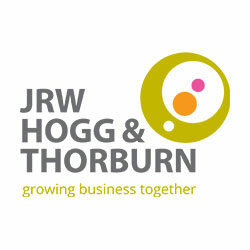Corporation Tax and Associates
The main rate of corporation tax increased to 25% from 1 April 2023. The relevant thresholds must be shared between companies that are Associated, which means the increase will affect some businesses more than others. Is there a way around the problem? Kenny Logan from our Edinburgh Office explains here in this article.
Since April 2023, we have more than one corporation tax (CT) rate: 19% the small profits rate (SPR) where annual profits are £50,000 or less; and 25% (the main rate) if profits are higher than £250,000. To avoid a cliff-edge change, marginal relief will in effect phase in the main rate for profits between £50,000 and £250,000.
Companies with subsidiaries or associated with each other must share the £50,000 and marginal relief thresholds.
For example, consider a company with a single subsidiary. Both CT thresholds are divided by two, so that the SPR only applies to the first £25,000 of profits in each company. This will usually result in a higher CT bill overall than a single company with no subsidiary or associate.
What is an associate?
Generally, companies are associated if, in the preceding twelve months, even for a single day, one controls the other, or both are controlled by the same owner(s). Companies that were dormant throughout the accounting period or holding companies that are passive and their only income is dividends from their subsidiaries don’t count as associates for the purpose of dividing the CT thresholds.
Control usually rests with the person owning the majority of a company’s shares with voting rights. However, where individual shareholders are associated, they may together have control if the aggregate of their shareholdings gives them majority voting rights in a company.
If all or some of the same individuals control other companies, the companies may be associated and so must share CT thresholds. However, this rule doesn’t apply unless another condition is met.
Companies under control by the same persons are not associated unless they are substantially financially interdependent, e.g., they share premises or staff.
If your accounting period straddles 1 April 2023, the profits must be divided between the period up to and including 31 March 2023, and the period after. If an accounting period is less than twelve months, the profit thresholds are applied pro rata.
You should ensure that any associated companies are fully disclosed so that the correct tax can be calculated, and the right disclosures made on the CT return.
Depending on commercial considerations, companies could be merged to reduce the number of associates required to share the CT thresholds.
IN SUMMARY
The main issue is that the higher tax rate hits companies at a lower profit level if they are associated with each other, which can lead to a higher overall tax bill than a single company with the same profits. This could be mitigated by merging companies, if feasible, but you should consider the commercial implications before doing so.
If you have any questions about this and other Corporation Tax and company accounting procedures please do contact the JRW team.
